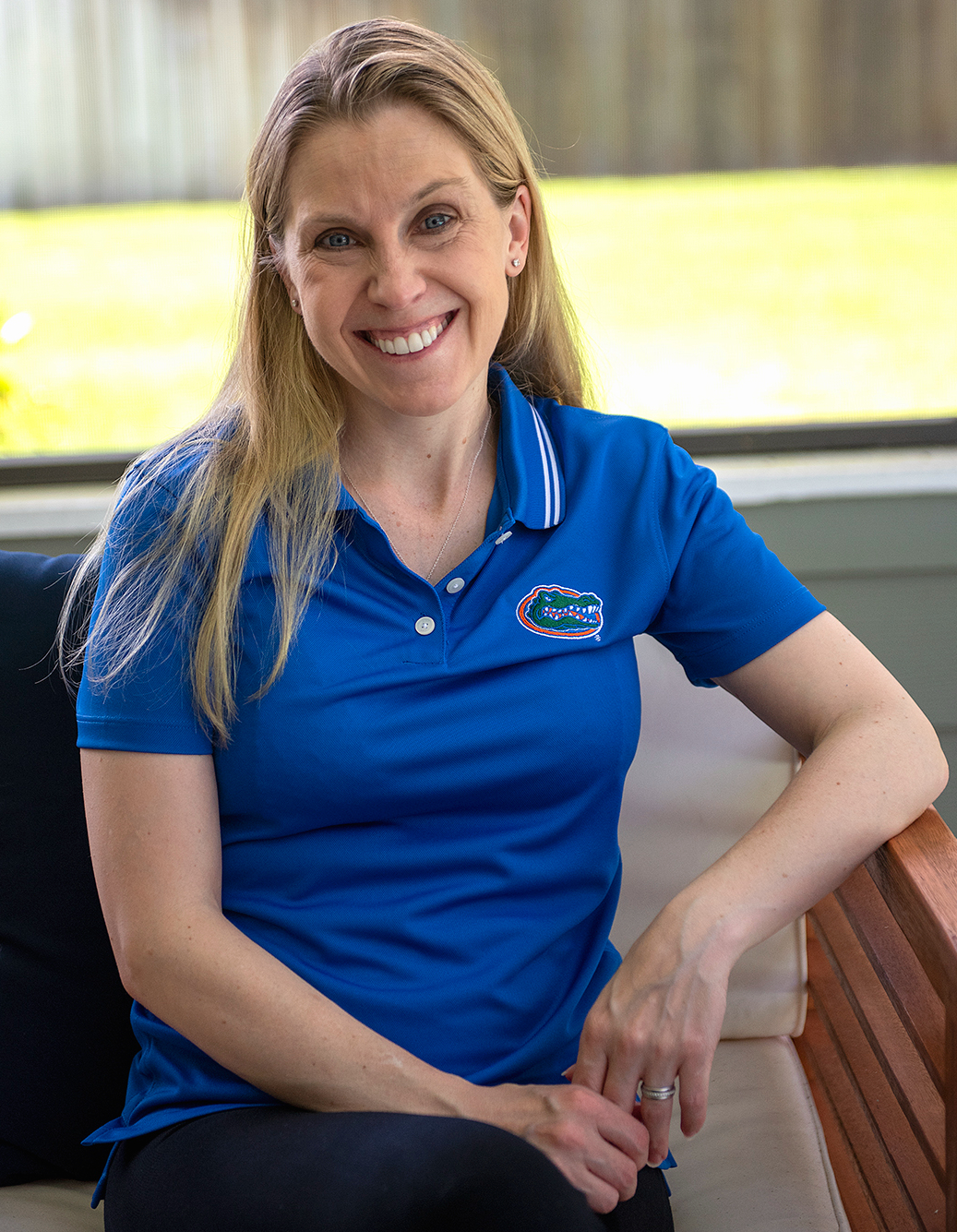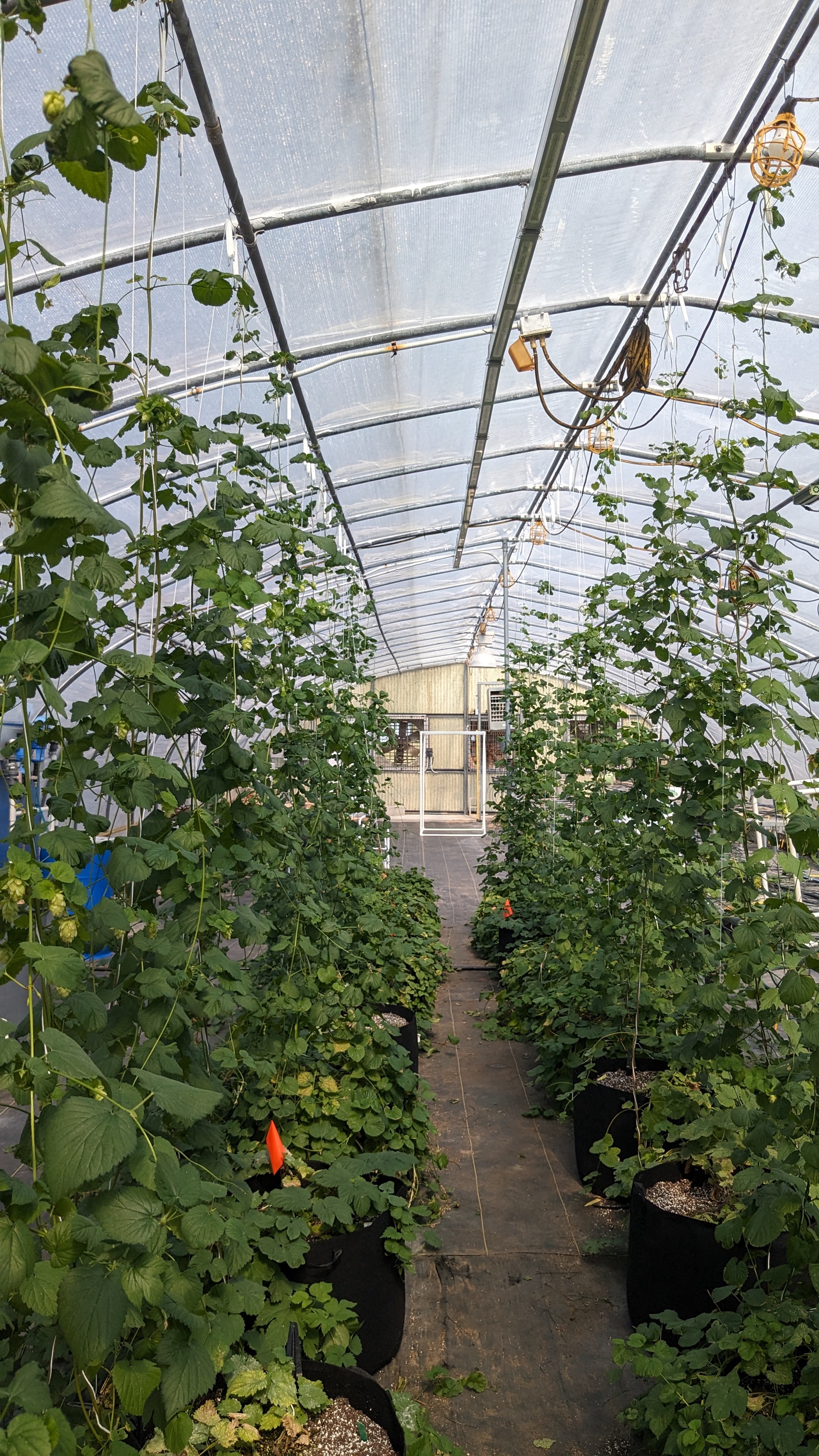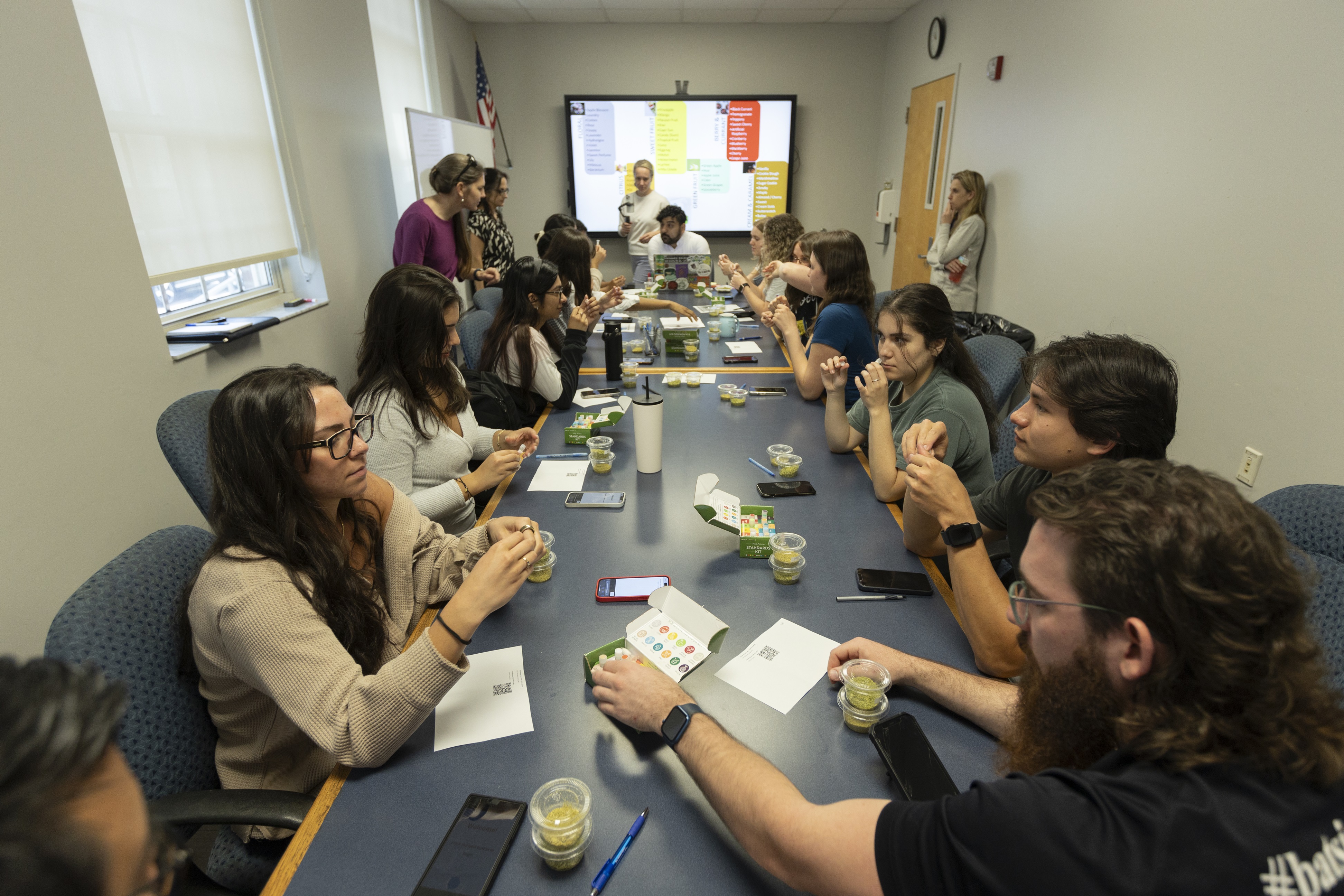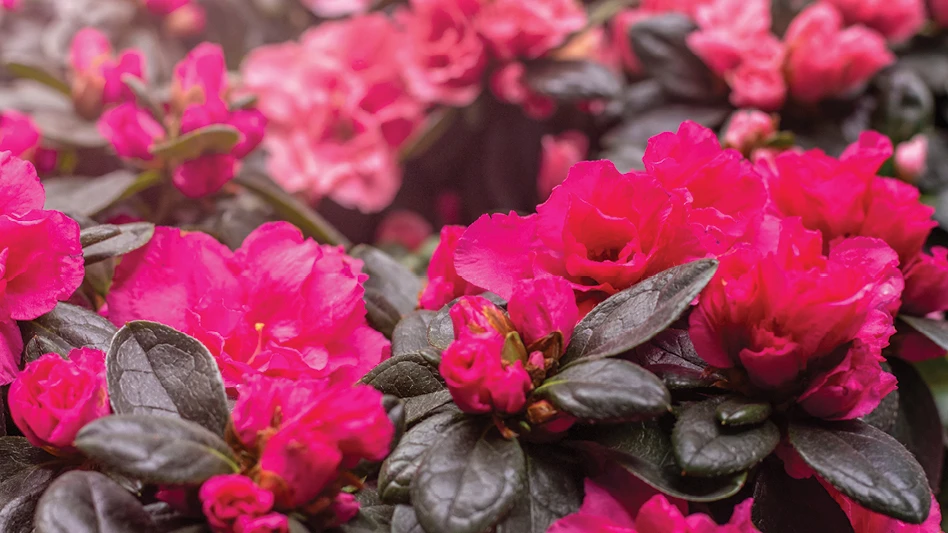
Tyler Jones, UF/IFAS
Researchers with UF’s Institute of Food and Agricultural Sciences (UF/IFAS) believe they have identified a method for making hop-growing viable despite Florida’s incompatible climate: greenhouses.
“This has never been done in Florida,” said Katherine Thompson-Witrick, an assistant professor in the UF/IFAS food science and human nutrition department and the leader of the study.
Hers is a potentially impactful endeavor.
In 2021, the Florida craft brewing industry generated $4.1 billion for the state, the fourth-largest amount in the country, according to the Brewers Association, a Colorado-based organization that monitors the industry.

Since January 2023, when the Florida Department of Agriculture and Consumer Services awarded Thompson-Witrick and her team a grant, they have harvested two crops of hops from a greenhouse at the UF/IFAS Mid-Florida Research and Education Center in Apopka.
In June, they hope to harvest again. Their objective is to develop cultivation practices that maximize aromatic and flavor characteristics comparable to those associated with traditional craft beer-brewing regions, like Yakima Valley in Washington.
Thompson-Witrick’s team planted 20 2-inch-tall seedlings of Cascade and Chinook varieties in April 2023. By July 2023, the plants had reached 20 feet tall, and the vines had to be manually separated to prevent them from becoming tangled.
“We saw a substantial amount of growth in the first nine months of this project, which is really outstanding and amazing for us,” Thompson-Witrick said.
The key was supplemental lighting installed within the greenhouse. Hops grow best when afforded at least 16 hours of sunlight, which is available at latitudes of 35 degrees and above; Florida’s uppermost latitude reaches just 31 degrees. The UF/IFAS Gulf Coast Research and Education Center in Balm has conducted breeding studies to develop Florida-compatible hops capable of adapting to the state’s shorter days.
Based on Thompson-Witrick’s preliminary research, the growth and flowering rates of the Apopka plants suggest her method could obtain the same yield of hops per plant as Yakima Valley.

within a UF/IFAS greenhouse in Apopka.
But is the product as appealing to the senses?
Thompson-Witrick uses a gas chromatography mass spectrometer to detect the chemical compounds contained within the hops, the alpha and beta assets that quantify how bitter a beer brewed from them would be. For a more subjective analysis, she recruited human volunteers.
Throughout UF’s spring semester, 14 students met regularly to pry open the lids of condiment containers and carefully stick their noses inside.
The contents, resembling shredded alfalfa, were heady, but layered beneath the strong earthy odor were hints of citrus, spice and floral notes. Students took deep sniffs and recorded the strength of the various scents they detected. They smelled both the Apopka hops as well as commercial ones, but they did not know which hops were which.
The repeated sensory trainings will eventually lead to official blind testing and comparison between commercial varieties and Thompson-Witrick’s product.
“We want to disseminate our findings to growers to help with diversifying the state’s agricultural crops and to provide information that would be critical to further cultivating hops,” she said.

Get curated news on YOUR industry.
Enter your email to receive our newsletters.
Latest from Greenhouse Management
- Growing enlightened
- American Floral Endowment awards 17 organizations $60,700 in educational grants
- Floral businesses invited to join Society of American Florists' Petal It Forward event in October
- Bioline AgroSciences acquires Viridaxis to strengthen leadership in aphids biocontrol
- Ryley Leech joins JumpLights as vice president of sales
- Meet the Retailers' Choice Awards from 2025 Farwest Show
- Added value
- National Garden Bureau announces featured crops for 2026 'Year of the' program






